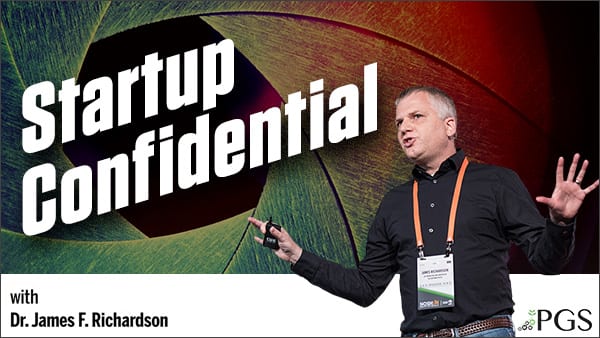PODCASTS / E53

Ep. 53 Brag About Your Fan List, Not Your Door Count
SEPTEMBER 1, 2021
Seriously, folks, what is up with the chest-beating about distribution breadth. There are 38,000 primary grocery points of distribution, including Walmart, in the U.S.
When you read articles about 3,000 doors, 5,000 doors, don’t be impressed. Which doors?
And what pray tell is the sell-through?
As I mention in my book – Ramping Your Brand – there is no statistical correlation between increases in distribution breadth and long-term growth, let alone likelihood of scaling.
These door count shout-outs are, I know, simply a proxy for how much we’re growing. But, they don’t establish anything, and I see naive founders too often impressed by these media PR statements.
You know what I wish founders would brag about?
Their email list.
Their SMS list.
Their DTC 12-month retention rate.
The number of unsolicited fan emails they get on a weekly basis and how its trending.
Any rich asshole can buy distribution. It’s not impressive. And it proves little. But they keep showing up at Bevnet anyways.
But you know what you can’t buy?
Fans.
You can buy email lists BTW for direct marketing mass market crap or for spamming. But not fan emails.
Those precious emails pile up in direct proportion to the memorability of your offering.
And to the extent you make an extra effort to engage with your fans and insert your brand early on in lifestyle or occupation networks of relevance, the emails should come in.
They should come in faster also if you give them reasons to check the email from you.
I’ll admit it takes more effort to get emails when you only sell, or mostly sell, through physical retail. But…but…the fact that you will have to work harder to be a presence in local communities will benefit you in the end in terms of loyalty and annual repeat revenue per household.
When you work hard to build a fanbase through dialogue and outreach, you incorporate a work ethic inside your startup that will pay enormous dividends long-term.
For one thing, your sales team will thank you because they actually have a company working hard outside the store to drive fans into the store. This rarely happens in CPG startups. Rarely.
So, the poor sales lead, usually one guy, feels like velocity growth is now his problem to solve. But, most of you will run out of long-term velocity growth if you just use trade techniques. Only a SkinnyPop with basically no face-off competition can pull that off.
Yet, I continue to meet founders who have very few emails or even social fans. And it concerns me.
Sometimes, it’s because they are self-manufacturing and simply understaffed. But, more often, it’s because they simply don’t believe it will work.
This lack of faith isn’t based on evidence per se, but rather received wisdom commonly spread by the first group of stakeholders founders encounter and the most cynical group of stakeholders they encounter: brokers and distributors. Interestingly enough, I haven’t really heard buyers collectively dismiss out-of-store consumer marketing that builds fans and gathers their emails. They may not be impressed with your plan, but smart merchandisers understand that growth brands are doing something, maybe a lot of things, outside the store to drive fans inside.
And they’ve seen it work. More often with big brands with massive budgets, yes, but they get it.
The big irony of what I’m discussing is that velocity growth driven by adding more and more repeat purchasing households, will create a case study that will vastly improve your chances of getting a face-off retailer to take you (or change their mind).
Organic velocity growth = brand validation to retailers and to Skate Ramp riders alike.
You can experience organic velocity growth without marketing outside the store or cute little LTO emails. But, to be honest, you’ll know this in the first months of retail sales. It’s that rare and unlikely immediately.
In Phase 1, the initial problem is absolute trial, and the targeting of that trial to efficiently produce fans, not a bunch of curious, shoulder-shrugging one-timers.
This is the Phase when most founders are focused only on operations, funding, sales growth or retail account sales. But it’s actually the phase when you should also be engaging with your fans, digitally and in-person. The pandemic interrupted this process for brands that sell primarily in traditional retail.
But if you’ve been selling online, you have no excuse. I’ll never forget one of my early clients, a DTC brand revealed to me in a session that they hadn’t picked up the phone and called ANY of their top 50 customers, one of whom bought $5000 of product in one year!
Come on people! These are the folks building your business with you. Do not hide from them. Especially if your sales are going well. Find out why they like you and who they are so you can find more of the same.
I’d bet on a brand in 500 stores with 10,000 emails than a brand in 3,000 doors with 1,200 emails, half of which come from one-time DTC customers.